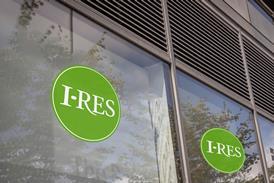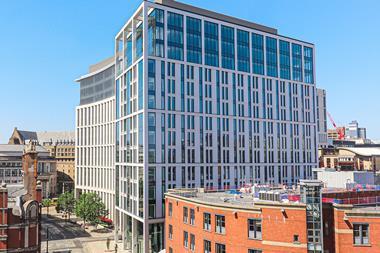On Tuesday, the City of London Corporation gave permission for a 12-storey groundscraper set on the frayed eastern rim of the City. The 304,000 sq ft brise soleil-wrapped block (pictured) would look fine on sunny Sheikh Zayed Road in Dubai. On dull old Aldgate? Gaspingly out of place.

But I’m not criticising the design, more the wisdom of anyone relying on office occupants to pay the rent in risky locations that can surely only grow riskier.
Last week, Landsec paid US fund PGIM £87m for 55 Old Broad Street, 10 floors of tired space squatting in the shadow of the 750 ft Heron Tower. The 100,000 sq ft block wraps round a 19-storey office tower containing 233,000 sq ft of space owned by Landsec.
Not hard to see Landsec coming up with plans for a 600 ft to 700 ft skyscraper containing at least that many square feet. A wise spot? As good as any. Certainly wiser than Aldgate.
The 2016 London Plan is being revised, correction, fiddled with. Most of the proposed changes were drafted more than a year ago. Last week saw correspondence between housing secretary Robert Jenrick and mayor Sadiq Khan. Subject? Restricting taller buildings in the outer boroughs. HELLO! GUYS! Maybe you need to sit up and take notice of what has been happening this year? Perhaps take notice of how others are coping?
A more open debate on Covid travails in another ‘World City’ took place last week, in The New York Times. “Anyone that thinks the way that people used the workplace in the past isn’t going to change post-pandemic is fooling themselves,” said Scott Rechler, chief executive of RXR Realty, which controls 26m sq ft of New York office space. Only 10% of workers have returned to their offices. Nearly 14% of Midtown space is vacant.
Rechler speaks for the Real Estate Board of New York. The landlord’s lobby group “is so concerned that the shifts in workplace culture caused by the outbreak will become long-lasting, that it is promoting a striking proposal: to turn more than 1m sq ft of Manhattan office space into housing” and begging the city to “expedite conversions by lifting zoning restrictions and change density requirements that bar apartments”.

New York is, of course, very different to London. Over there, landlords see little difference between selling homes or renting offices. This makes it far easier for Big Apple developers to imagine a Covid crunch.
In London, office developers stick to their game. Landsec and British Land have made half-hearted efforts to build flats in Zone One, but both would admit it isn’t really their game, not at the moment.
Office-to-resi conversions
Even so, there is a lot of tatty office space in London that could be turned into apartments. Would removing the ban on permitted development rights in the centre of London be a good plan? No, of course not. Loosening zoning restrictions could stimulate more office-to-residential conversions, but, please, only if based upon full planning permission. Even so, the market for 1,500sq ft flats is small. We’re talking of a sideshow.
The main event? “What the hell is going to happen to demand for office space?” All we have heard so far is self-serving predictions from the ‘well, they would say that’ brigade.
Most of them seem to spend more time bragging about saving the planet from extinction rather than their businesses. That is why it is refreshing to see that New York developers have at least moved past denial to acceptance that the tectonic plates are shifting.
In London, the boundaries within which it is safe to develop offices look certain to shrink. That’s about as certain as anyone can be right now. Last week, Barclays and Deutsche Bank signalled a permanent exodus for many staff. The draft London Plan largely ignores the events of 2020 and so will be out of date before it is published. This week, the lord mayor of London, channelling King Canute, called for a ‘back to work day’ in April.
Peter Bill is a journalist and the author of Planet Property and Broken Homes
































No comments yet